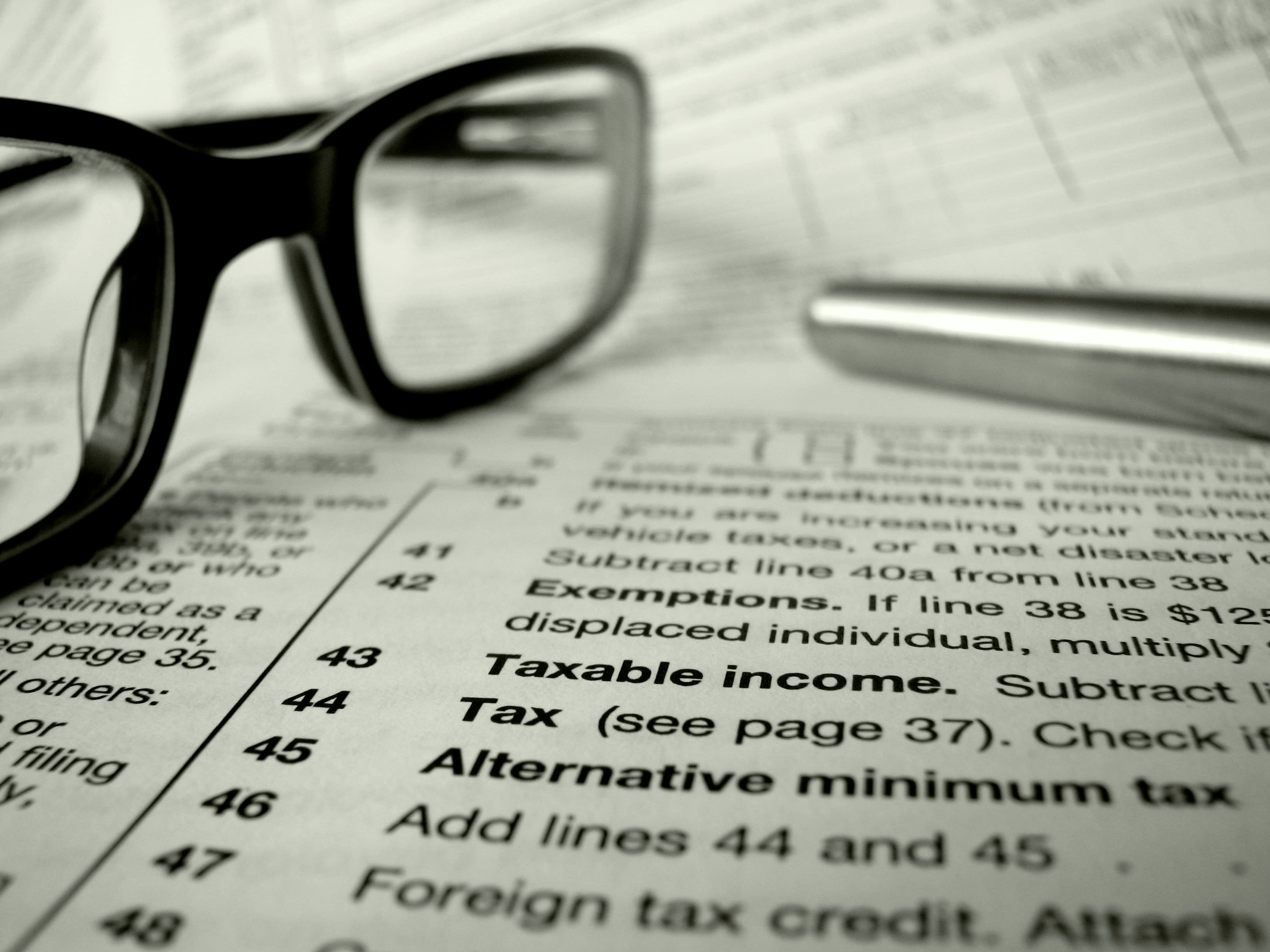The National Association of REALTORS® (NAR) strived throughout the tax reform process to preserve the tax benefits of homeownership and real estate investment, as well to ensure as many real estate professionals as possible would benefit from proposed tax cuts. Many of the changes reflected in the final bill were the result of the engagement of NAR and its members over several years.
- Introduction
- Major Provisions Affecting Current and Prospective Homeowners
- Major Provisions Affecting Commercial Real Estate
- Major Provisions Affecting Real Estate Professionals
- Appendix 1 – Examples of How the Deduction for Qualified Business Income May Affect Various Real Estate Professionals
- Appendix 2 – Examples of How The New Law Will Affect the Tax Incentives of Owning a Home
Introduction
While NAR remains concerned that the overall structure of the final bill diminished the tax benefits of homeownership and will cause adverse impacts in some markets, the advocacy of NAR members, as well as consumers, helped NAR to gain some important improvements throughout the legislative process. The final legislation will benefit many homeowners, homebuyers, real estate investors, and NAR members as a result.
The final bill includes some big successes. NAR efforts helped save the exclusion for capital gains on the sale of a home and preserved the like-kind exchange for real property. Many agents and brokers who earn income as independent contractors or from pass-through businesses will see a significant deduction on that business income.
As a result of the changes made throughout the legislative process, NAR is now projecting slower growth in home prices of 1-3% in 2019 as low inventories continue to spur price gains. However, some local markets, particularly in high cost, higher tax areas, will likely see price declines as a result of the legislation’s new restrictions on mortgage interest and state and local taxes.
The following is a summary of provisions of interest to NAR and its members. NAR will continue to provide ongoing updates and guidance to members, as well as work with Congress and the Administration to address additional concerns through future legislation and rulemaking. Lawmakers have already signaled a desire to fine tune elements of The Tax Cuts and Jobs Act as well as address additional tax provisions not included in this legislation, and REALTORS® will need to continue to be engaged in the process.
The examples provided are for illustrative purposes only. Individuals are advised to consult a tax professional about their own personal situation.
All individual provisions of the measure are generally effective starting with the 2018 tax filing year and expire on December 31, 2025 unless otherwise noted.
Major Provisions Affecting Current and Prospective Homeowners
Tax Rate Reductions
- The new law provides generally lower tax rates for all individual tax filers. While this does not mean that every American will pay lower taxes under these changes, most will. The total size of the tax cut from the rate reductions equals more than $1.2 trillion over ten years.
- The tax rate schedule retains seven brackets with slightly lower marginal rates of 10%, 12%, 22%, 24%, 32%, 35%, and 37%.
- The final bill retains the prior-law maximum rates on net capital gains (generally, 15% maximum rate but 20% for those in the highest tax bracket; 25% rate on “recapture” of depreciation from real property).
Tax Brackets for Ordinary Income Under Prior Law and the Tax Cuts and Jobs Act (2018 Tax Year) Single Filer
| Prior Law | Tax Cuts and Jobs Act | ||
| 10% | $0-$9,525 | 10% | $0 - $9,525 |
| 15% | $9,525 - $38,700 | 12% | $9,525 - $38,700 |
| 25% | $38,700 - $93,700 | 22% | $38,700 - $82,500 |
| 28% | $93,700 - $195,450 | 24% | $82,500 - $157,500 |
| 33% | $195,450 - $424,950 | 32% | $157,500 - $200,000 |
| 35% | $424,950 - $426,700 | 35% | $200,000 - $500,000 |
| 39.6% | $426,700+ | 37% | $500,000 |
Tax Brackets for Ordinary Income Under Prior Law and the Tax Cuts and Jobs Act (2018 Tax Year) Married Filing Jointly
| Prior Law | Tax Cuts and Jobs Act | ||
| 10% | $0 - $19,050 | 10% | $0 - $19,050 |
| 15% | $19,050 - $77,400 | 12% | $19,050 - $77,400 |
| 25% | $77,400 - $156,150 | 22% | $77,400 - $165,000 |
| 28% | $156,150 - $237,950 | 24% | $165,000 - $315,000 |
| 33% | $237,950 - $424,950 | 32% | $315,000 - $400,000 |
| 35% | $424,950 - $480,050 | 35% | $400,000 - $600,000 |
| 39.6% | $480,050+ | 37% | $600,000+ |
Exclusion of Gain on Sale of a Principal Residence
- The final bill retains prior law. A significant victory in the final bill that NAR achieved.
- The Senate-passed bill would have changed the amount of time a homeowner must live in their home to qualify for the capital gains exclusion from 2 out of the past 5 years to 5 out of the past 8 years. The House bill would have made this same change as well as phased out the exclusion for taxpayers with incomes above $250,000 single/$500,000 married.
Mortgage Interest Deduction
- The final bill reduces the limit on deductible mortgage debt to $750,000 for new loans taken out after 12/15/17. Loans existing on 12/15/2017 of up to $1 million are grandfathered and are not subject to the new $750,000 cap. Neither limit is indexed for inflation.
- Homeowners may refinance mortgage debts existing on 12/15/17 up to $1 million and still deduct the interest, so long as the new loan does not exceed the amount of the mortgage being refinanced.
- The final bill repeals the deduction for interest paid on home equity debt through 12/31/25. Interest is still deductible on home equity loans (or second mortgages) if the proceeds are used to substantially improve the residence.
- Interest remains deductible on second homes, but subject to the $1 million / $750,000 limits.
- The House-passed bill would have capped the mortgage interest limit at $500,000 and eliminated the deduction for second homes.
Deduction for State and Local Taxes
- The final bill limits the amount of state and local tax deduction (including property taxes) to $10,000. This $10,000 limit applies for both single and married filers and is not indexed for inflation.
- At the beginning of the process, both the House and Senate bills would have completely eliminated the deduction for state and local taxes. The final bill, while much less beneficial than prior law for many, represents a significant improvement over the original proposals.
Standard Deduction
- The final bill provides a standard deduction of $12,000 for single individuals and $24,000 for joint returns. The new standard deduction is indexed for inflation.
- By doubling the standard deduction, Congress greatly reduced the value of the mortgage interest and property tax deductions as tax incentives for homeownership. Congressional estimates indicate that only 12-13% of filers will now be eligible to claim these deductions by itemizing, meaning there will be no tax differential between renting and owning for almost 90% of taxpayers.
Repeal of Personal Exemptions
- Under the prior law, tax filers could deduct $4,150 in 2018 for the filer and his or her spouse, if any, and for each dependent. These exemptions have been repealed in the new law.
- This change alone greatly mitigates (and in some cases entirely eliminates) the positive aspects of the higher standard deduction.
To illustrate how the above-listed changes can affect the tax incentives of owning a home for a first-time buyer and a middle-income family of five, please see these examples:
Example 2: Middle-Income Family of Five
Mortgage Credit Certificates (MCCs)
- The final bill retains prior law.
- The House-passed legislation would have repealed MCCs.
Deduction for Medical Expenses
- The final bill retains the deduction for medical expenses (including decreasing the 10% floor to 7.5% floor for 2018).
- The House bill would have eliminated the deduction for medical expenses.
Child Credit
- The final bill increases the child tax credit to $2,000 from $1,000 and keeps the age limit at 16 and younger. The income phase-out to claim the child credit was increased significantly from ($55,000 single/$110,000 married) under prior law to $500,000 for all filers in the final bill.
Student Loan Interest Deduction
- The final bill retains prior law, allowing deductibility of student loan debt up to $2,500, subject to income phase-outs.
- The House bill would have eliminated the deduction for interest on student loans.
Deduction for Casualty Losses
- The final bill provides a deduction only if a loss is attributable to a presidentially-declared disaster.
- The House bill would have eliminated the deduction for casualty losses with limited exceptions.
Moving Expenses
- The final bill repeals moving expense deduction and exclusion, except for members of the Armed Forces.
- The House-introduced bill would have eliminated the moving expense deduction for all filers, including military.
Major Provisions Affecting Commercial Real Estate
Like-Kind Exchanges
- The final bill retains the prior Section 1031 Like Kind Exchange rules for real property. It repeals the use of Section 1031 for personal property, such as art work, auto fleets, heavy equipment, etc.
- The exclusion of real estate from the repeal of 1031 like-kind exchanges is a major victory for real estate stakeholders, who had fought hard to preserve the provision for several years, and against long odds.
Carried Interest
- The final bill includes the House and Senate language requiring a 3-year holding period to qualify for prior-law (capital gains) treatment.
- Again, real estate stakeholders prevailed against long odds to preserve the incentive of capital gains treatment for carried interests in the final legislation.
Cost Recovery (Depreciation)
- The final bill retains the prior recovery periods for nonresidential real property (39 years), residential rental property (27.5 years) and qualified improvements (15 years). The bill also replaces separate definitions for qualified Restaurant, Leasehold, and Retail improvements with one definition of “Qualified Improvement Property.”
Qualified Private Activity Bonds
- The final bill retains the deductibility of qualified private activity bonds used in constructing affordable housing, local transportation and infrastructure projects and for state and local mortgage bond programs.
- The House bill would have eliminated the use of private activity bonds.
Low Income Housing Tax Credit
- The final bill retains prior law. However, a lower corporate rate will negatively impact the value of the credits in the future, and will result in less low-income housing being developed.
Rehabilitation Credit (Historic Tax Credit)
- The final bill repeals the prior-law 10% credit for pre-1936 buildings, but retains the prior 20% credit for certified historic structures (but modified so the credit is allowable over a 5-year period based on a ratable share (20%) each year).
- The House bill would have entirely eliminated the Historic Rehabilitation Credit.
Provisions Not Included in the Final Bill
Rental Income Subject to Self-Employment Tax
- The House-introduced bill would have subjected rental income to self-employment taxes. This provision was dropped from the House (and final) bill.














